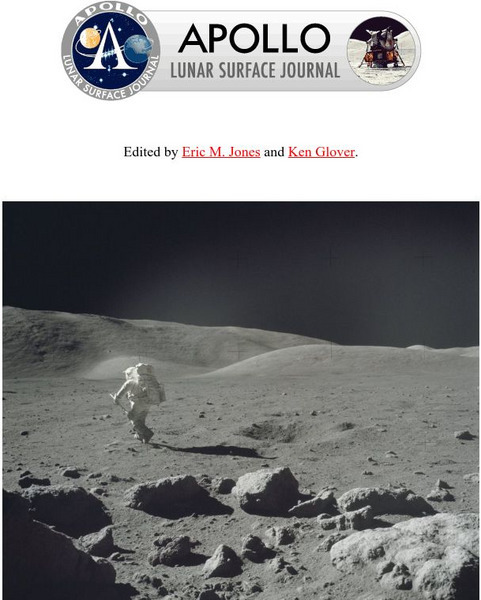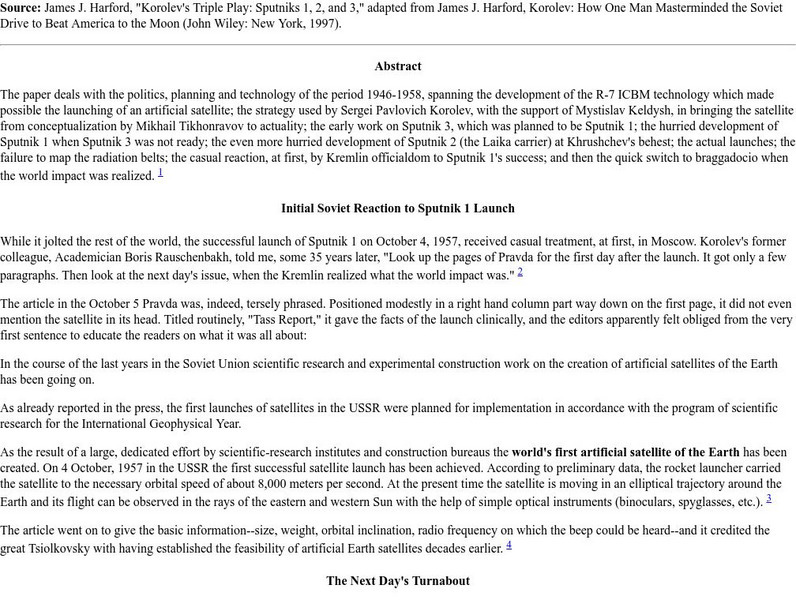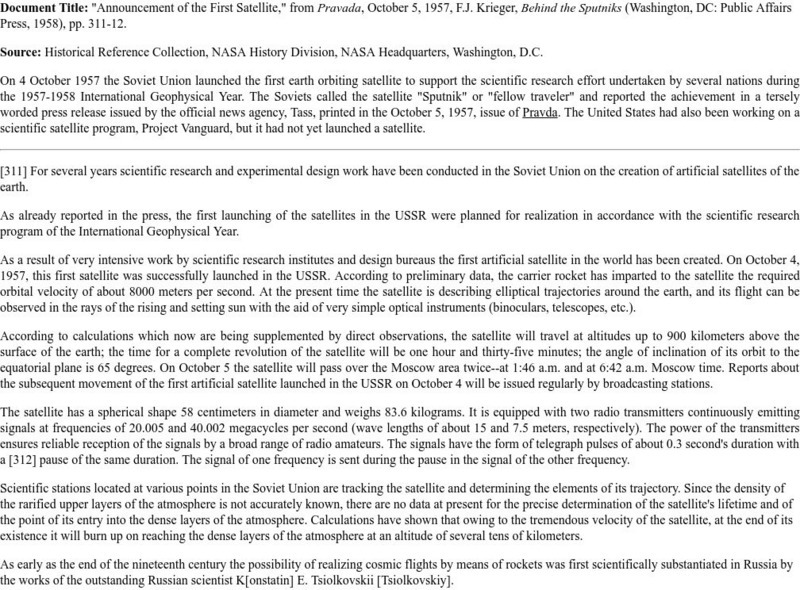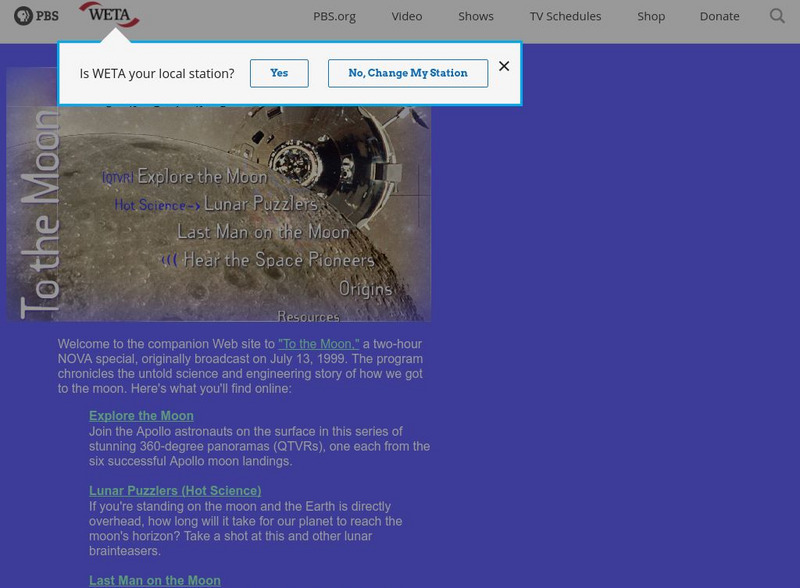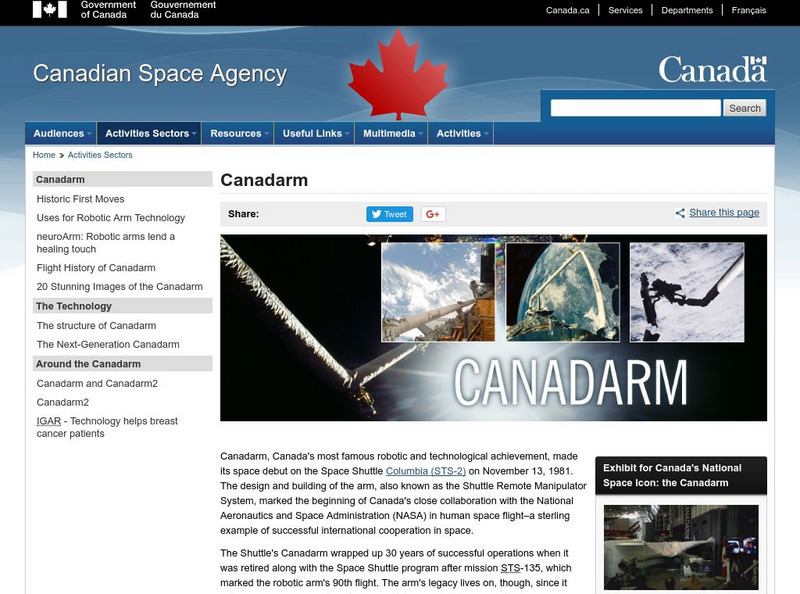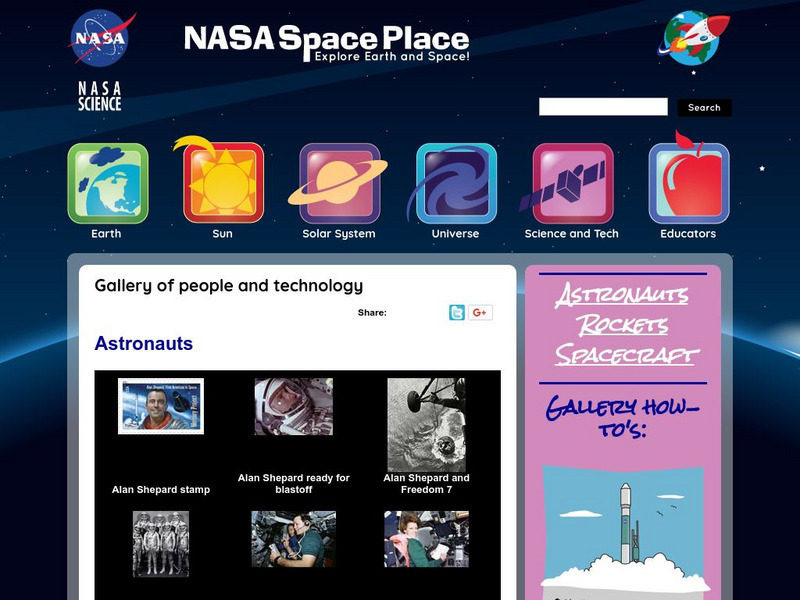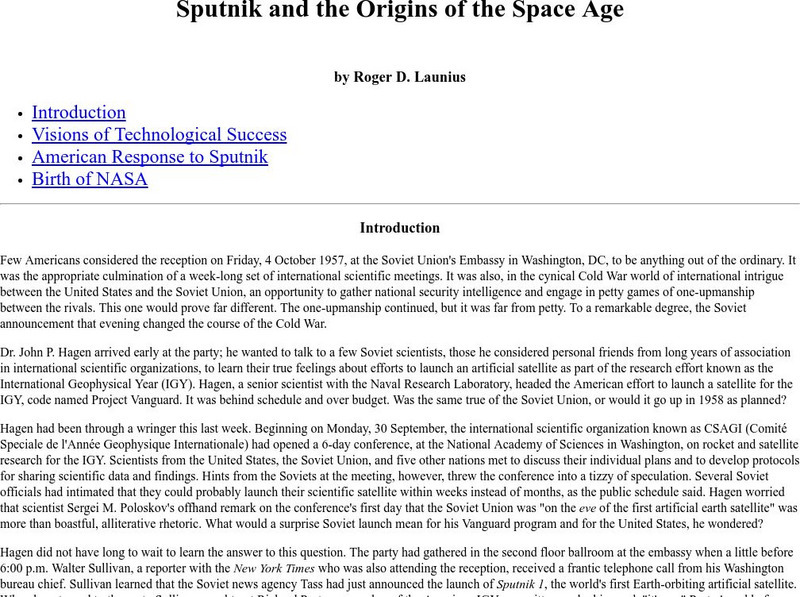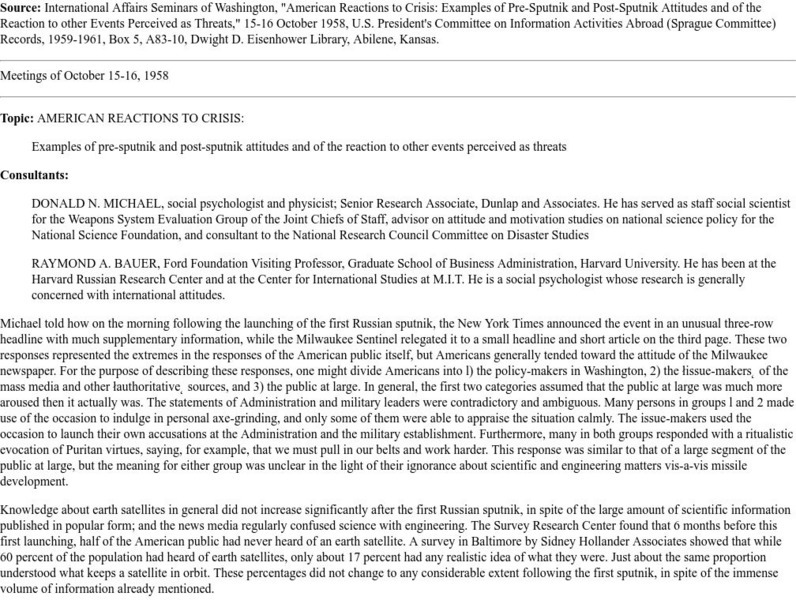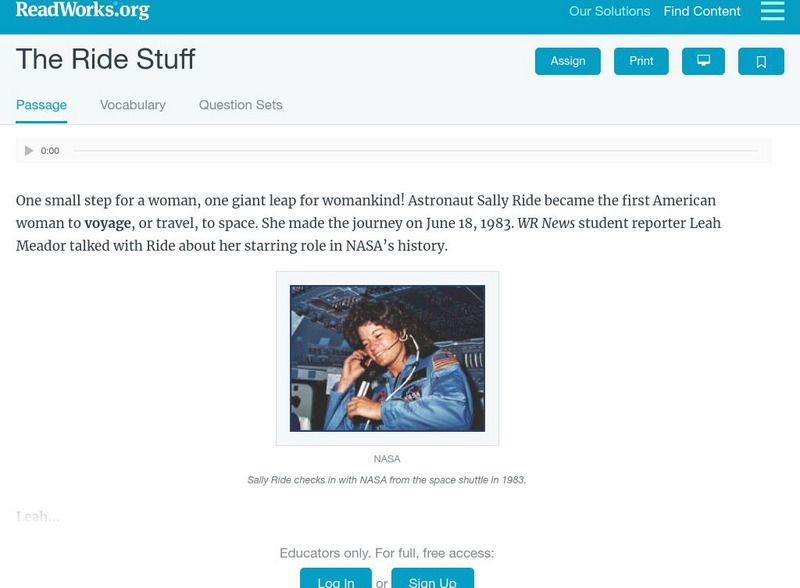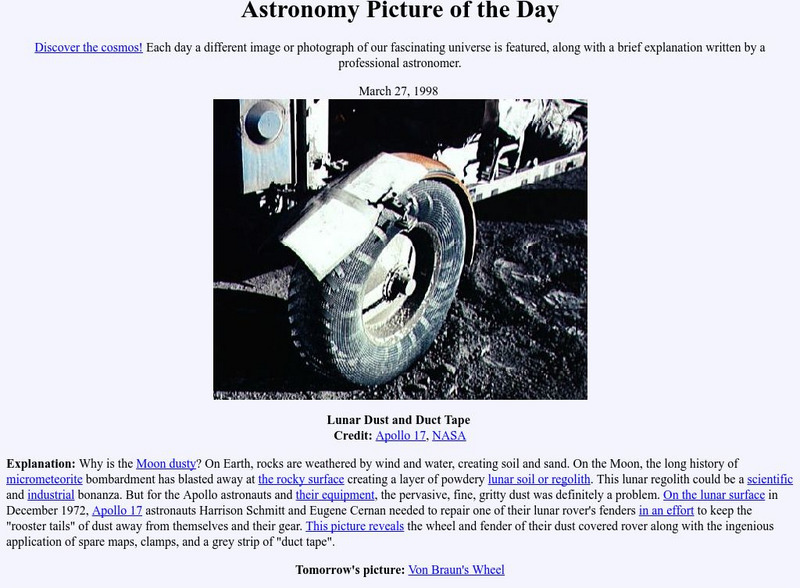NASA
Nasa Star Child: Space Travel (Level 1)
Learn about the history of space travel. Audio content is included as well as vocabulary words linked to a glossary of terms.
A&E Television
History.com: Challenger Explosion: How Groupthink and Other Causes Led to the Tragedy
Seven lives were lost as communications failed in the face of public pressure to proceed with the launch despite dangerously cold conditions. January 28, 1986, The sun had been up for less than an hour and air temperatures were a few...
Encyclopedia Britannica
Encyclopedia Britannica: Guide to Black History: Guion S. Bluford, Jr.
Brief biographical sketch of the life and career of the first African American launched into space.
American Museum of Natural History
American Museum of Natural History: Ology: Astronomy: In Pictures: Beyond Planet Earth
What would it be like to travel across the solar system and explore space? Take a look at some of the places that humans might go to someday, and the questions that scientists are asking.
NASA
Nasa: Apollo Lunar Surface Journal
"The Apollo Lunar Surface Journal is a record of the lunar surface operations conducted by the six pairs of astronauts who landed on the Moon from 1969 through 1972. The Journal is intended as a resource for anyone wanting to know what...
NASA
Nasa: Sputniks 1, 2, and 3
NASA provides a paper that "deals with the politics, planning and technology of the period 1946-1958" in the Sputnik program.
NASA
Nasa: The International Geophysical Year
This site from NASA outlines the Sputnik program and the political underworkings that allowed it to reach fruition.
NASA
Nasa: "Pravda" Press Release
NASA provides the full text from the tersely worded "Pravda," the Russian national newspaper, that announced the successful launch of Sputnik.
NASA
Nasa, Human Space Flight: Apollo 11 Mission
The story of the Apollo 11 lunar landing is told with dramatic details, pictures, and mission highlights.
Other
Historic Wings: John Glenn Friendship 7
The story of America's first astronaut to orbit the earth during the Mercury Space program. After launching the program click on continue or on the numbers to learn about the story of the Mercury program and the first American to orbit...
PBS
Nova: To the Moon
This companion website of a NOVA program that aired in 1999 features extensive information that focuses on moon research and includes a history of the Apollo missions as well as the science of the moon's origins.
Government of Canada
Canadian Space Agency: Canadarm
A concise description of the development, function and history of Canada's most famous robotic and technological achievement.
NASA
Nasa: Apollo Crews and Records
This site from NASA provides a listing of all Apollo mission primary and back up crews along with the "CapComs" or ground to spacecraft communicatators. The first through seventh astronaut selection groups and a listing of Accumulated...
TeachEngineering
Teach Engineering: Mission to Mars
The Mission to Mars curricular unit introduces students to Mars-the Red Planet. Students discover why scientists are so interested in studying this mysterious planet. Many interesting facts about Mars are revealed, and the history of...
Houghton Mifflin Harcourt
Harcourt: Biographies
A fantastic resource where you can find biographies of historical figures. You can search by the person's name or by topics, such as Presidents, United States Leaders, Scientists, Inventors, Humanitarians, Explorers and Pioneers,...
NASA
Nasa: The Space Place: Gallery of People and Technology
NASA has provided a whole page full of images for you to download and print. These pictures are labeled and can be enlarged.
University of South Florida
Exploring Florida: Nasa Photographs
This colorful display has numerous photographs taken throughout the history of Cape Canaveral. Images include shuttle launches, landings, and even the astronauts themselves. Captions are included with each picture.
NASA
Nasa: Sputnik and the Dawn of the Space Age
This site from NASA describes the impact that Sputnik had in triggering the space race.
NASA
Nasa: Sputnik and the Origins of the Space Age
NASA provides a paper providing a background to the Sputnik launch and the U.S. response.
NASA
Nasa: Pre and Post Sputnik Public Attitudes
This site from NASA provides a paper that describes the public's attitiude before and after the launch of the Sputnik satellite. Originally presented as part of the "U.S. President's Committee on Information Activities Abroad."
NASA
Nasa: Sputnik Pictures
NASA provides pictures of various Sputnik program satellites, including Sputnik 1. Also has pictures of key officials involved in the Sputnik program.
Read Works
Read Works: The Ride Stuff
[Free Registration/Login Required] An interview with the first female astronaut, Sally Ride. A question sheet is available to help students build skills in reading comprehension.
Digital Public Library of America
Dpla: Women in Science: Space Exploration
Through primary source documents, discover the history of NASA's "human computers," early aerospace industry pioneers, and the struggle for American women to be allowed into the astronaut program.
NASA
Nasa: Astronomy Picture of the Day: Lunar Dust and Duct Tape
Dust, a common and usually minor problem on Earth, presented a major challenge for the Apollo astronauts on the Moon. Here's an interesting solution created by the Apollo 17 crew.




